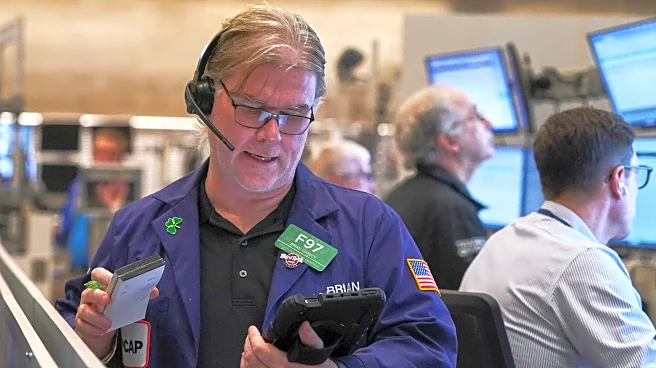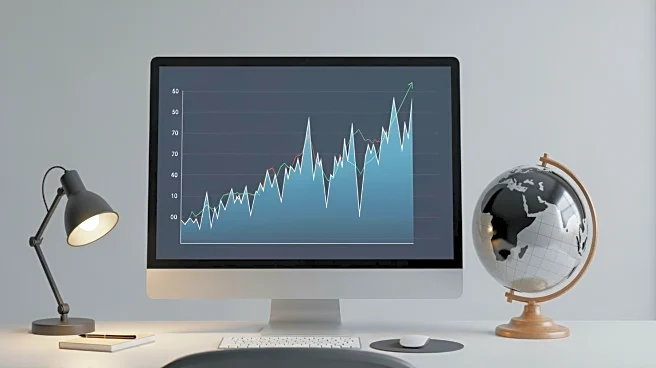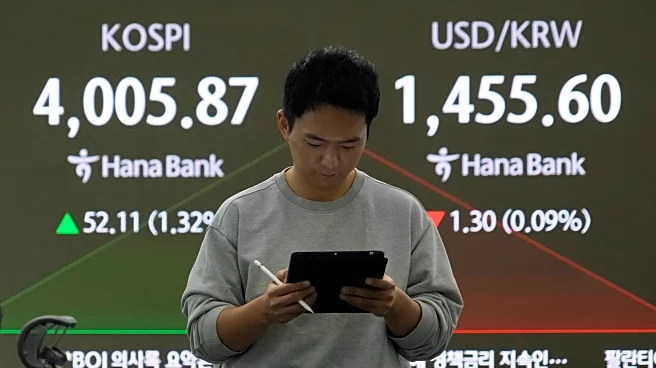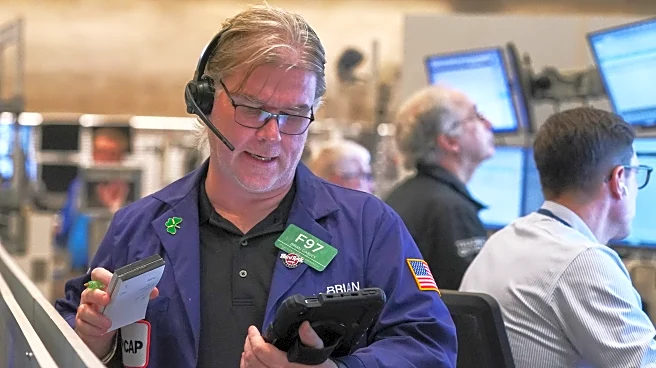What's Happening?
Palantir Technologies, a leader in artificial intelligence software, has experienced a significant stock price increase of 1,960% since the AI boom began in late 2022. Despite its success, Wall Street
analysts have raised concerns about the company's valuation, noting its price-to-sales ratio is nearly three times higher than the next closest stock in the S&P 500. Analysts like Brent Thill from Jefferies have suggested that while Palantir's fundamentals are strong, its current valuation is unsustainable. The company reported impressive third-quarter financial results, with revenue increasing by 63% to $1.1 billion and non-GAAP earnings surging over 100%. However, the stock trades at 108 times sales, making it the most expensive in the S&P 500.
Why It's Important?
The overvaluation concerns surrounding Palantir Technologies highlight the potential risks for investors in the AI sector. As the company continues to capitalize on the AI boom, its high valuation could lead to significant stock price corrections, impacting investors who have bet heavily on its growth. The situation underscores the importance of evaluating stock fundamentals alongside market trends, as inflated valuations can lead to volatility. Investors may need to consider diversifying their portfolios to mitigate risks associated with high-growth tech stocks.
What's Next?
Analysts predict that Palantir's stock may experience a downturn, with Brent Thill suggesting a potential 60% downside from its current share price. Investors and market watchers will likely keep a close eye on Palantir's future financial performance and any strategic moves the company makes to sustain its growth. The broader AI market may also see shifts as companies adjust to valuation pressures and investor sentiment.
Beyond the Headlines
The situation with Palantir Technologies raises broader questions about the sustainability of the AI boom and the potential for market corrections. As AI continues to evolve, companies may face increased scrutiny over their valuations and the real-world applicability of their technologies. This could lead to a more cautious investment approach in the tech sector.












